The former convent of Santa Maria la Real
lies nestled on a mountain slope, directly on the Way of St. James.
It was founded in 1052 by King García Sanchez III, according to legend, because he found a statue of the Madonna in a cave during a hunt
Originally, the monks followed the rules of St. Isidore, and later Benedictines arrived, who carried out numerous alterations and additions.
The present monastery church dates from 1516 and consists of three naves and a cloister. From the church you can reach the cave where the king is said to have found the Madonna statue. The Baroque altarpiece in the main chapel dates from the end of the 17th century. The choir stalls from the beginning of the 16th century are made of walnut wood and are considered a masterpiece of late Gothic art.
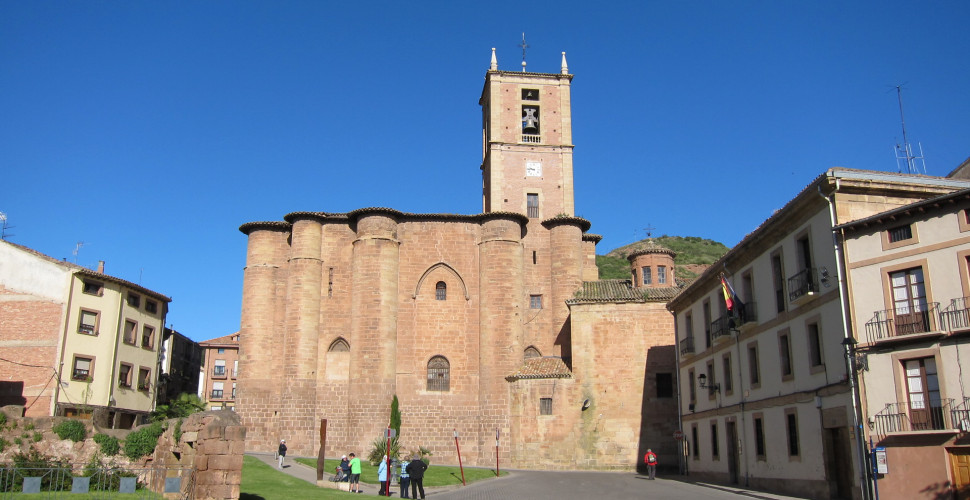

Above the entrance to the cloister there is a coat of arms (with the golden flow) of King Charles I, later Emperor Charles V.
Passing through the gate, one enters the magnificent Claustro de los Caballeros, whose construction was supported by Charles I in the 16th century.

In the cloister there are tombs and burial chapels of noble families.
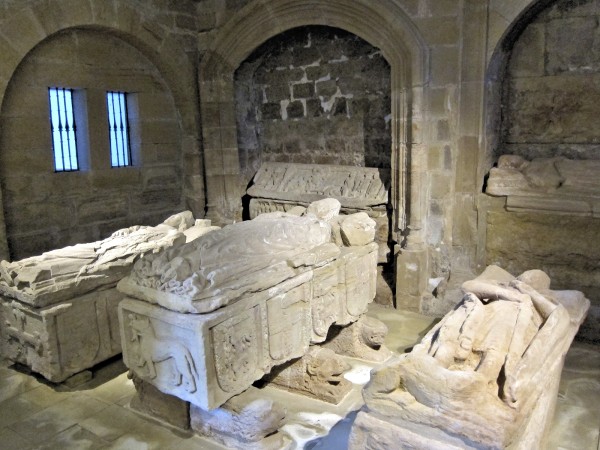
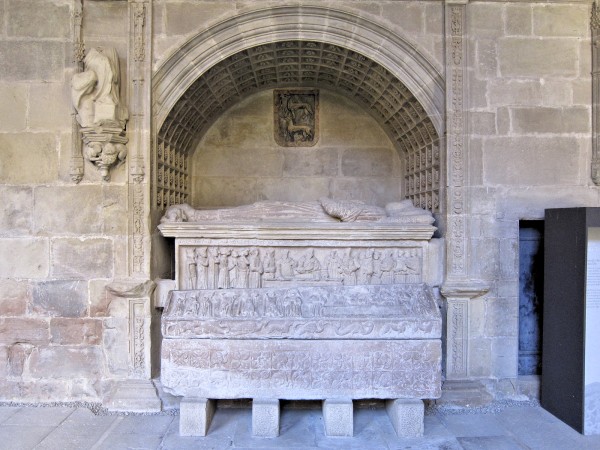
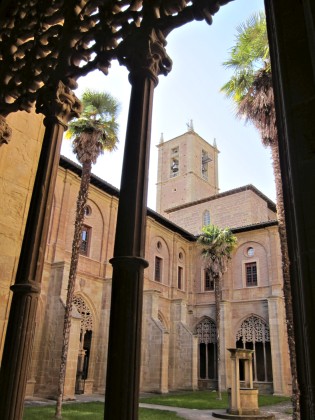
The inner courtyard in the cloister.
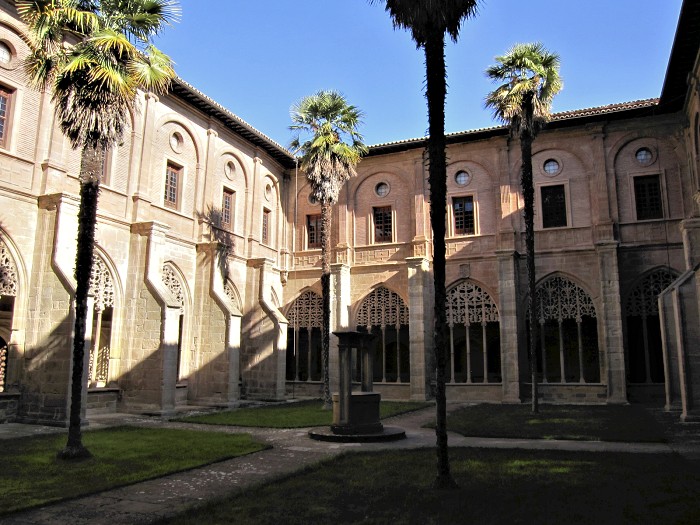
You will get a different view by clicking on the picture!
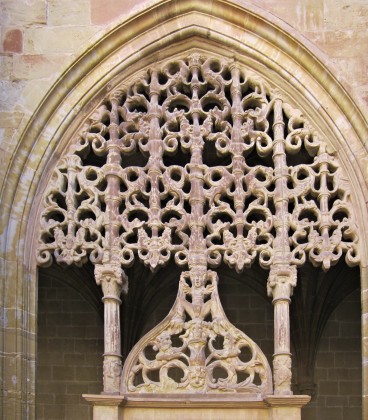
The cloister surprises with its mixture of styles: Gothic vaults and plateresque, openwork tracery.
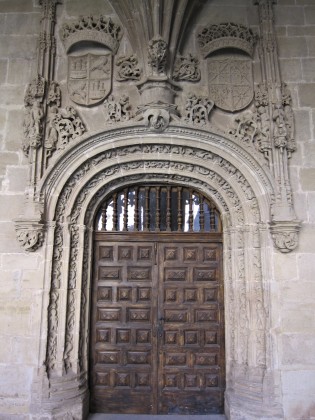
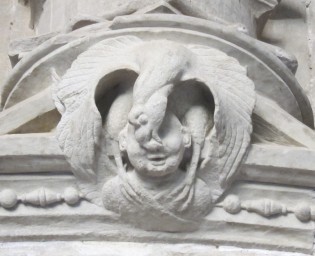
The entrance portal to the church of Santa Maria with amusing detail.
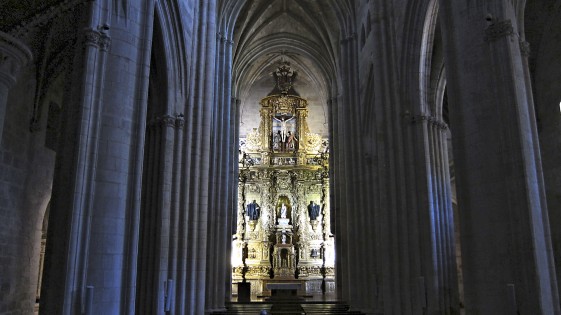
The Baroque reredos, decorated with gold, includes the portrait of Santa Maria la Real, found by King Carcía.

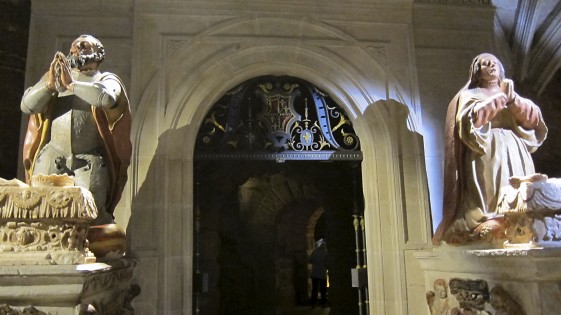
On the sides of the entrance to the cave are the statues of Don Garcia and Doña Estefania, the founders of the monastery in a prayerful posture.
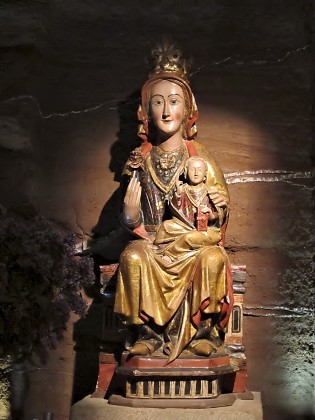
From the tombs, through a narrow corridor, you can reach the rocky grotto of Santa Maria. The Virgin worshipped in the grotto is an early Gothic woodwork from the 13th century, which comes from the royal fortress of Nájera and is known as the Holy Virgin of the Rose.
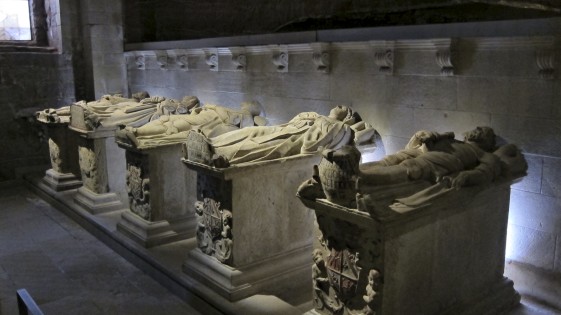
The royal crypt contains twelve tombs of the former kings,...
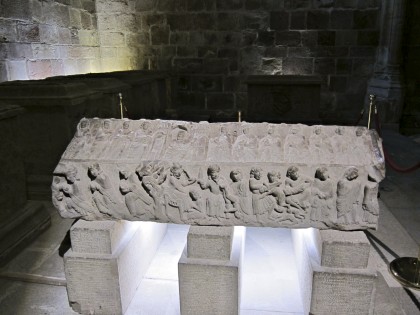
... and that of Queen Blanca de Navarre, a genuine 12th century Romanesque work of art
 Logroño - Nájera
Logroño - Nájera |
overview: Way of St. James in Spain |
